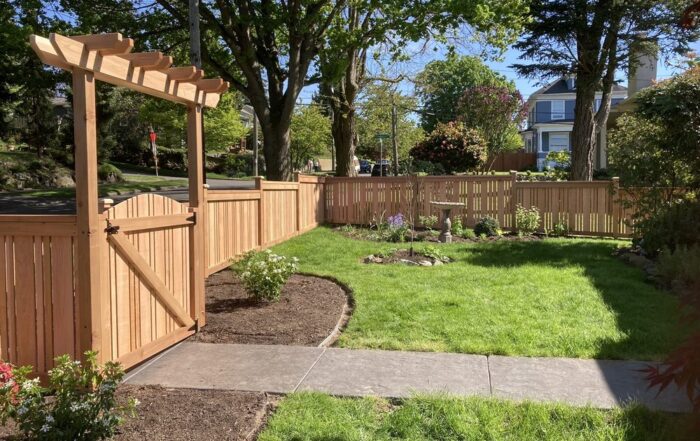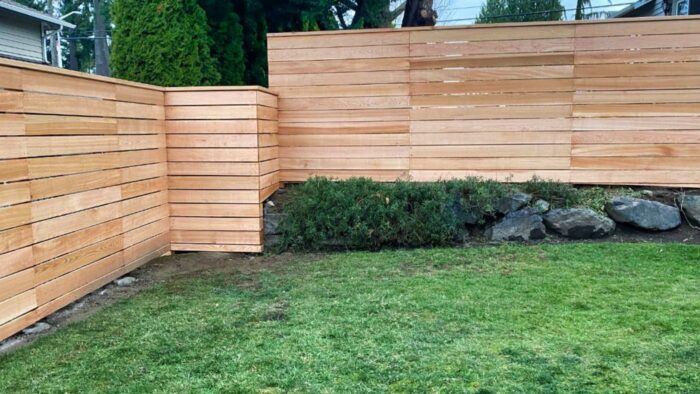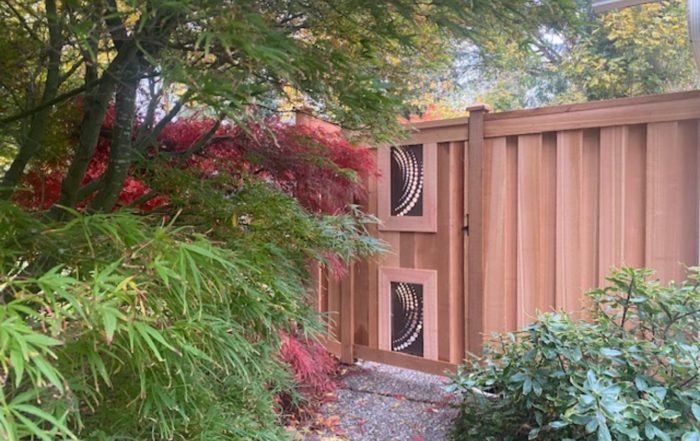Looking to fill the gap between your fence and your neighbor's? Discover effective solutions like lattice panels, living fences, and more to boost privacy, security, and curb appeal, all while staying within legal guidelines.
Dealing with a gap between your fence and a neighbor’s fence can be frustrating. It can compromise your privacy, security, and the overall look of your yard. In this article, we’ll provide practical solutions, discuss legal considerations, and offer maintenance tips to help you effectively handle fence gaps.
Key Takeaways
- Understanding property lines and local regulations is crucial to avoid disputes before building a fence.
- Choosing the right gap-filling solutions, like lattice panels or living fences, balances aesthetics with functionality and privacy.
- Regular maintenance of fence solutions ensures their longevity and effectiveness, protecting your property and enhancing its appeal.
- If you use a neighbor’s fence, you may be required to compensate for half the value of that fence, so it’s important to have a clear agreement in place.
Understanding the Issue
When dealing with fence-related issues, it’s essential to understand the problem at hand. This involves identifying the key factors involved, such as the fence line, property line, and neighbor’s property. In some cases, a neighbor’s fence may encroach on your property, or you may be unsure about who owns the fence. To resolve these issues, it’s crucial to communicate effectively with your neighbor and consider local zoning laws and regulations.
Start by clearly identifying your property lines. This can be done by referring to your property deeds or hiring a surveyor for precise measurements. Understanding where your property begins and ends will help you address any potential encroachments or disputes.
Next, familiarize yourself with local zoning laws. These regulations dictate permissible fence heights, materials, and styles, ensuring compliance and neighborhood harmony. Knowing these rules can prevent future disputes and help you make informed decisions about your fence.
Effective communication with your neighbor is also key. Discuss any concerns or issues openly and try to reach a mutual understanding. This can prevent misunderstandings and foster a cooperative relationship, making it easier to resolve any fence-related issues.
Understanding Property Lines and Fence Boundaries
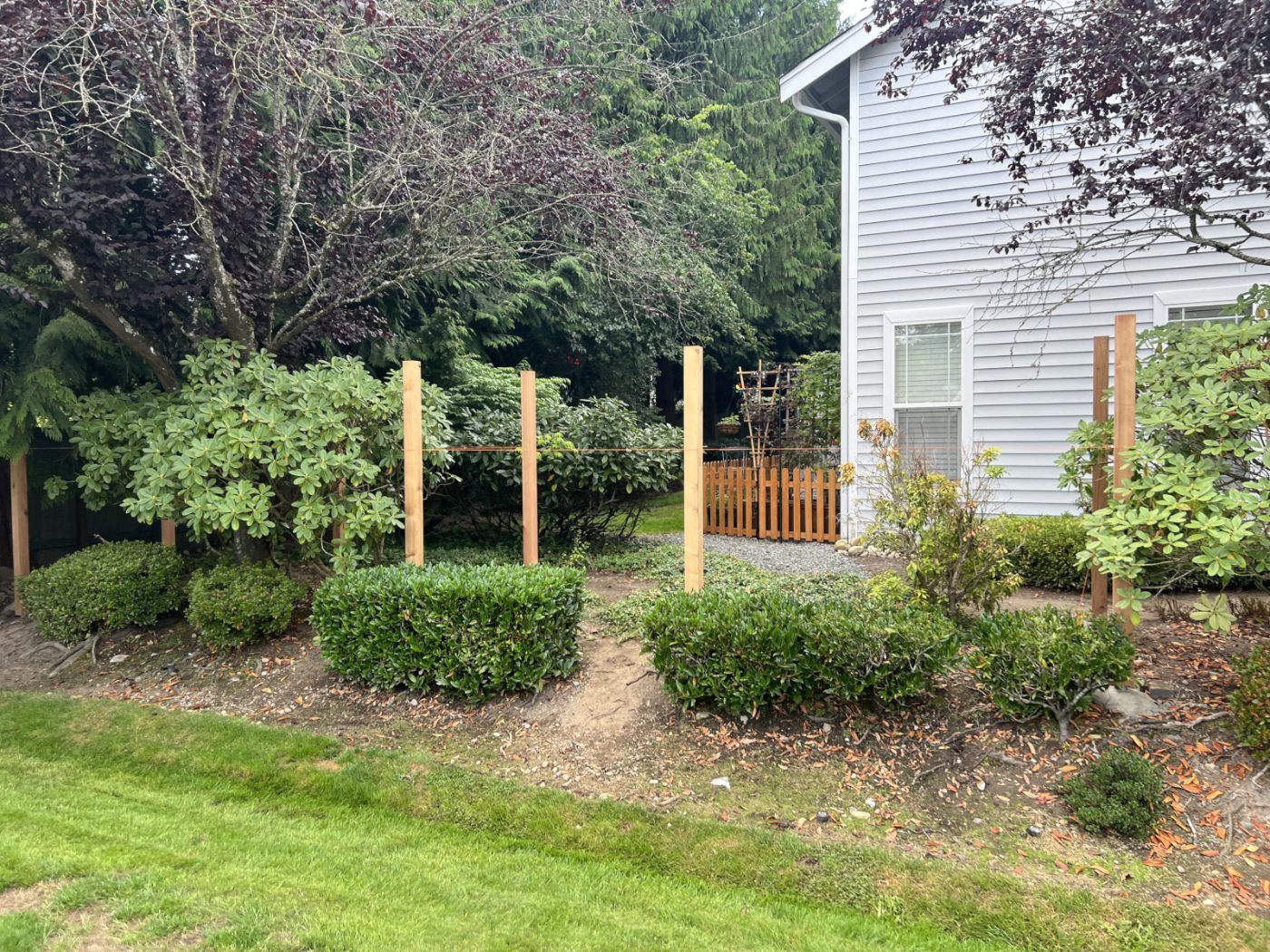
Knowing your own property lines is fundamental to resolving fence line gaps and avoiding disputes with neighbors. Building a fence only to find it encroaches on a neighbor’s property is a costly mistake that proper groundwork can prevent, especially when considering the property line.
To accurately determine your property boundaries, refer to your property deeds. These documents provide detailed descriptions of your property’s dimensions and can usually be found in your purchase records or at your local county recorder’s office. For additional certainty, consulting a surveyor can offer precise measurements and clarify any ambiguities. This is particularly important if you intend to make significant changes to your fencing.
Local zoning laws dictate permissible fence heights, materials, and styles to ensure compliance and maintain neighborhood harmony. Consult your local zoning office to understand the regulations before building or modifying a fence.
Laws usually permit neighbors to connect to a shared fence if it complies with local zoning laws and property boundaries. This means you and your other neighbor insisted might legally share the cost and responsibility of maintaining the fence. Communicating openly and reaching mutual agreements can prevent disputes and foster cooperation with your neighbors.
Legal Considerations for Fence Gaps and Local Zoning Laws

Understanding the legal aspects of fence gaps is tricky but necessary. In some cases, you may decide to build your own fence to avoid shared responsibilities and potential disputes. City and county regulations often dictate fence height, style, and materials. These regulations help ensure compliance and can prevent potential legal disputes.
Responsibilities for shared fences are often divided between neighbors in many areas. Having a written agreement detailing each party’s responsibilities and costs is advisable. This agreement can cover everything from initial construction to ongoing maintenance, ensuring there’s no confusion or conflict. Neighbors should notify each other if a shared fence is planned, and open communication can prevent future disputes.
If disputes do arise, it’s best to resolve them amicably through dialogue. If an impasse occurs, consulting a legal professional can provide clarity and direction. Legal professionals can interpret local regulations and mediate fair resolutions, ensuring both parties’ rights and responsibilities are respected.
Resolving Disputes with Neighbors

Resolving disputes with neighbors can be challenging, especially when it comes to fence-related issues. However, there are steps you can take to resolve the issue amicably. First, try to communicate with your neighbor and understand their perspective. Open dialogue can often resolve misunderstandings and lead to a mutually agreeable solution.
If the issue persists, consider seeking mediation. A neutral third party can help facilitate a fair discussion and resolution. Many communities offer mediation services specifically for neighbor disputes, providing a structured environment to address concerns.
In some cases, you may need to consult with a local authority or legal professional. They can provide guidance on local regulations and property boundaries, ensuring that any actions you take are compliant with the law. This is particularly important if you’re considering installing a new fence or modifying an existing fence to resolve the issue.
Remember, maintaining a good relationship with your neighbor is important. Approach the situation with empathy and a willingness to compromise. By considering local regulations and property boundaries, you can find a solution that works for both parties and maintains neighborhood harmony.
Neighbor’s Property and Fence Encroachment
If a neighbor’s fence encroaches on your property, it’s essential to address the issue promptly. Start by communicating with your neighbor and explaining the situation. They may not be aware of the encroachment, and a friendly conversation can often resolve the issue without further conflict.
If the issue persists, you may need to seek legal advice or consult with a local authority. A legal professional can provide clarity on property boundaries and local regulations, helping you understand your rights and responsibilities. They can also assist in drafting a formal letter to your neighbor, outlining the encroachment and requesting a resolution.
In some cases, you may need to consider installing a new fence or modifying an existing fence to resolve the issue. Ensure that any changes you make comply with local regulations and property boundaries. This may involve obtaining permits or approvals from local authorities.
Addressing fence encroachment promptly and professionally can prevent further disputes and maintain a positive relationship with your neighbor. By understanding local regulations and property boundaries, you can find a fair and legal solution to the issue.
Practical Solutions for Filling Fence Gaps
With legal and boundary considerations understood, we can explore practical solutions for filling fence gaps. From simple fixes to elaborate enhancements, there are various options to suit every need.
Lattice panels, trellis sections, and decorative ironwork are some popular choices that can effectively fill gaps while adding aesthetic value to your property.
Using Lattice Panels
Lattice panels are a classic option, offering functionality and charm for filling fence gaps. These panels allow air and light to pass through while blocking visibility and access, providing a balance of privacy and openness. Lattice panels, available in wood and vinyl, can be tailored to match your existing wooden fence and landscape.
Installing lattice panels is relatively straightforward. They can be attached between fence posts using weather-resistant zip ties, nails, or screws. Opting for wooden lattice requires more maintenance to keep them in top shape. Regular sealing or staining will help prevent deterioration from weather exposure and keep your lattice panels in top shape.
Installing Trellis Sections
Trellis sections, made from wood, vinyl, or plastic, offer a versatile solution by providing structural support and decorative appeal.
Incorporating climbing plants like ivy or roses can create a living tapestry that covers gaps and adds a lush, green element to your outdoor space.
Adding Decorative Ironwork
Decorative ironwork can transform your fence gaps into artistic focal points. Ironwork, available in designs from simple patterns to intricate scrollwork and filigree, can add elegance and sophistication to your yard. These features can be integrated into the fence structure or used as standalone panels, based on your preference.
Coating decorative ironwork with a sealant or clear coat paint ensures longevity and prevents rust. This simple step can protect the metal from the elements and maintain its beauty over time.
Modern minimalist designs and classic ornate patterns in decorative ironwork provide unique ways to fill fence gaps and enhance your property’s aesthetic.
Creating a Living Fence with Plants
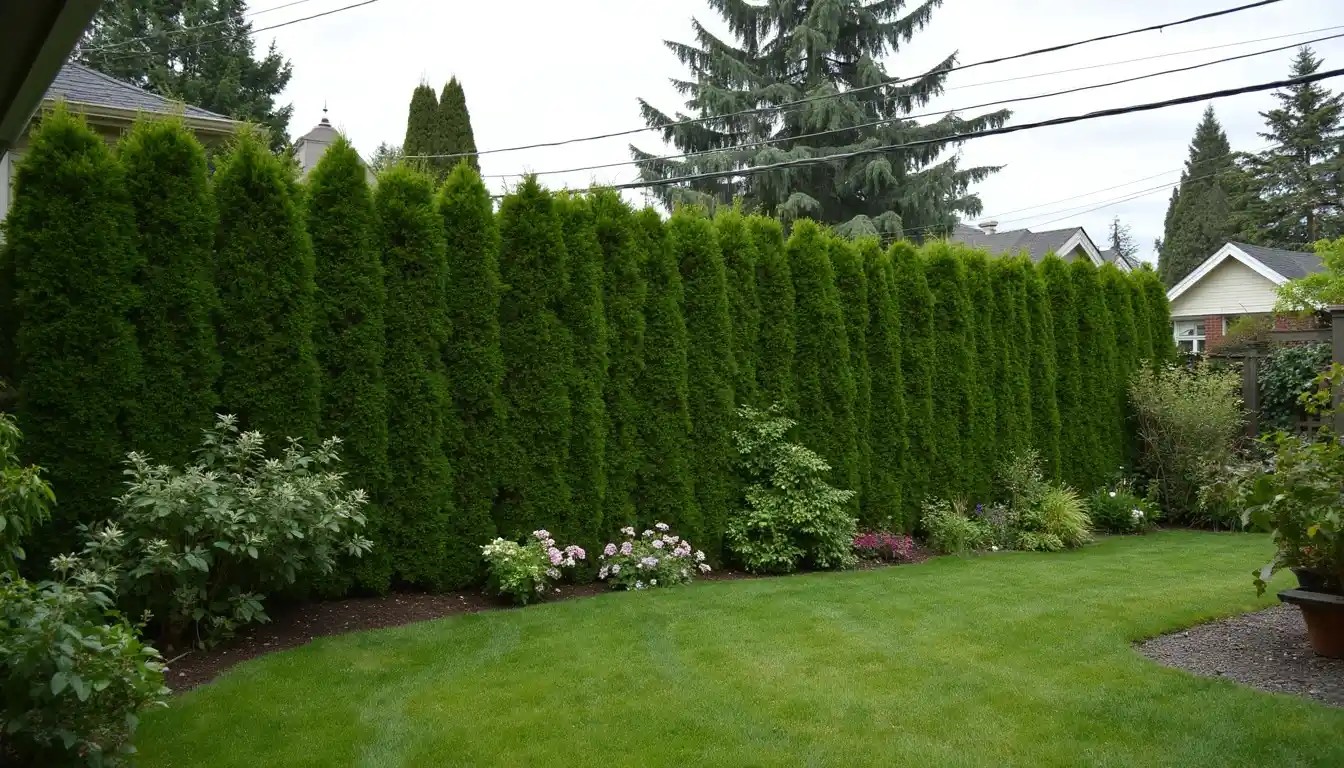
Creating a living fence with plants is an excellent option for those who love a natural look. Living fences not only enhance privacy but also serve as habitats for wildlife, providing food and shelter for birds, insects, and small mammals. These can also filter noise and dust, enhancing the tranquility of your outdoor space.
Many plant options are available for creating a living fence. Fast-growing shrubs like skip laurels and concolor firs can provide quick privacy and conceal unattractive views. English holly is another great choice, offering year-round privacy with its dense, evergreen foliage. For added aesthetic appeal, consider incorporating flowering plants like roses or hydrangeas.
Living fences may take time to grow but require minimal maintenance once established. Drought-resistant varieties reduce upkeep, making this a sustainable and eco-friendly option for filling fence gaps.
DIY Ideas for Fence Gap Fillers
If you’re feeling creative, there are plenty of DIY ideas for filling fence gaps. Proper measurements and durable, weather-resistant materials ensure custom gap fillers stand the test of time. Materials such as wood, wrought iron, and even repurposed items can be used to create unique and eye-catching solutions.
For a personalized touch, consider using colored glass bottles, large seashells, or ceramic tiles to fill fence gaps. Vintage shops offer treasures like old shutters, doors, and window frames that can be repurposed into artistic gap fillers. DIY projects offer endless possibilities and can add distinctive charm to your outdoor space.
Addressing Security Concerns with Neighbor’s Fence
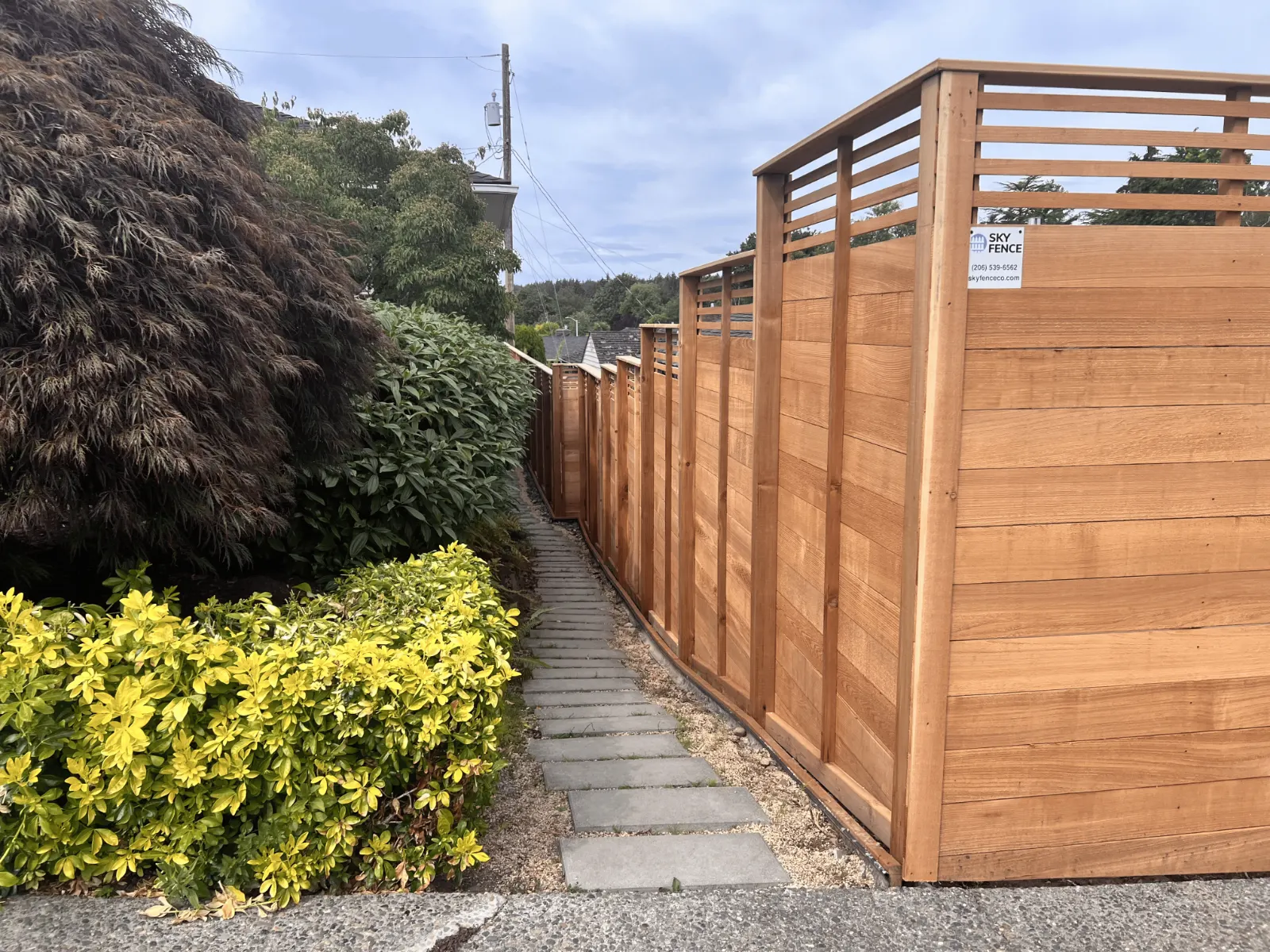
Security is paramount for your property. Filling fence gaps is crucial for maintaining security and aesthetic appeal. Open gaps can invite trespassers, so addressing these issues promptly is essential for protecting your home and yard.
Screen panels effectively block visibility and noise while allowing air circulation in fence gaps. Materials such as wood, bamboo, and decorative ironwork can be used for these inserts, providing both security and aesthetic value. Consider your yard’s functional and aesthetic needs when choosing materials and methods for filling fence gaps.
Fencing regulations help maintain good neighborly relationships and ensure property security. Addressing fence gaps thoughtfully creates a secure and beautiful outdoor space that offers peace of mind, especially when considering two fences.
Maintenance Tips for Fence Gap Solutions
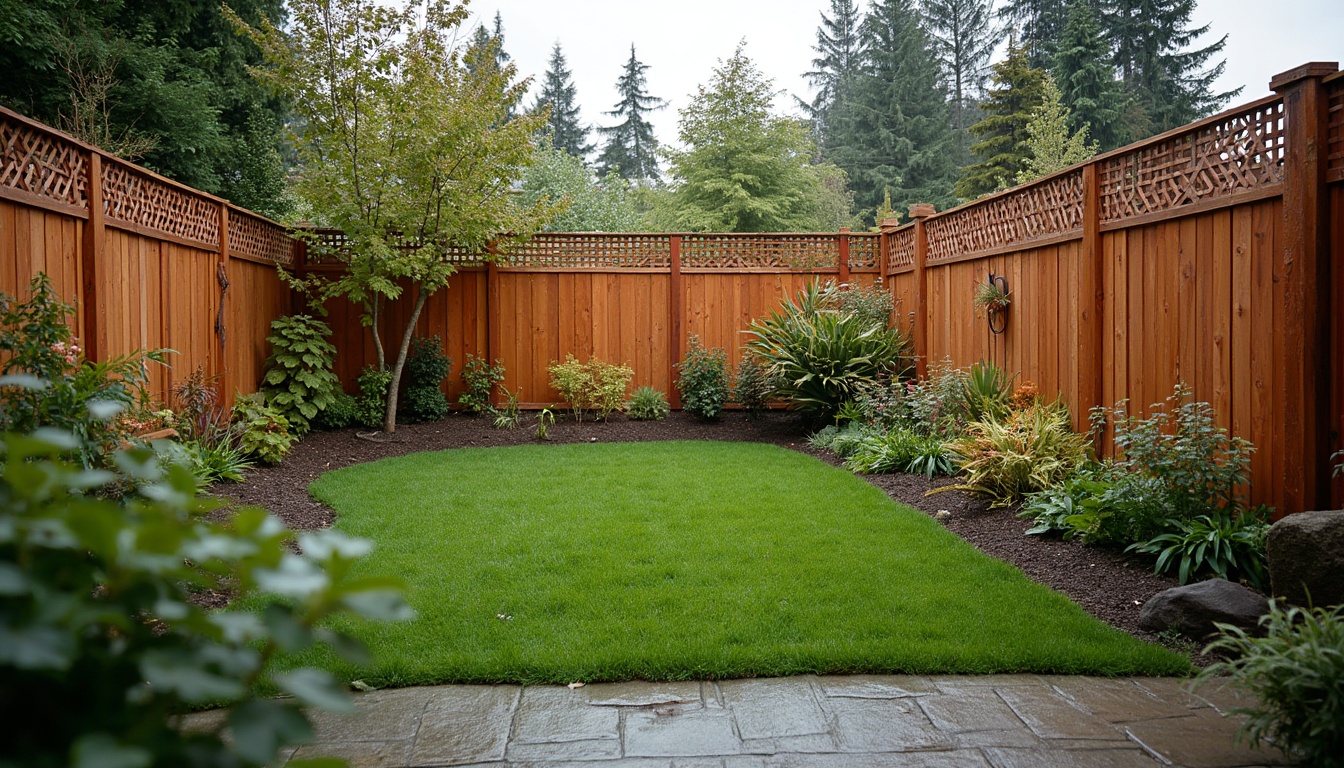
Maintaining fence gap solutions is key to ensuring their longevity and effectiveness. Using weather-resistant fasteners for wood or vinyl lattice panels enhances durability. Wooden lattice panels require regular sealing or staining to prevent deterioration and maintain appearance.
Coating decorative ironwork with a sealant or paint prevents rust and keeps it looking its best over time. Wood trellises also need periodic treatment with sealants or stains to withstand outdoor elements and maintain structural integrity.
Regular maintenance keeps your fence gap solutions functional and aesthetically pleasing for years to come.
Summary
Addressing gaps between fences is more than just a matter of aesthetics; it’s about ensuring privacy, security, and harmony with your neighbors. From understanding property lines and legal considerations to exploring practical solutions and DIY ideas, there are numerous ways to fill those pesky gaps effectively.
Whether you opt for a traditional lattice panel, a lush living fence, or a creative DIY solution, the key is to choose what best fits your needs and preferences. Regular maintenance will ensure your chosen solution remains effective and beautiful. Take the first step today to transform your outdoor space and enjoy the benefits of a secure, private, and visually appealing yard.
Frequently Asked Questions
How can I determine my property lines accurately?
To determine your property lines accurately, check your property deeds and consider hiring a surveyor for precise measurements. This way, you can avoid any disputes and know exactly where your boundaries lie.
What are some legal considerations when filling fence gaps?
When filling fence gaps, be mindful of local regulations regarding fence height, style, and materials. Also, it’s a good idea to get a written agreement with your neighbors to avoid any disputes.
What are practical solutions for filling fence gaps?
A great solution for filling fence gaps is using lattice panels or trellis sections; they not only enhance the look of your fence but also serve a functional purpose. Plus, decorative ironwork can add a unique touch while keeping your space secure.
How can I create a living fence with plants?
To create a living fence, pick fast-growing and drought-resistant shrubs like skip laurels or English holly for low maintenance. This will help you establish a sturdy, green barrier in no time!
What materials are suitable for DIY fence gap fillers?
You can creatively use materials like wood, wrought iron, terra cotta, stone, concrete, or even repurposed items like old shutters and window frames to fill those pesky fence gaps. Just pick what suits your style best!

